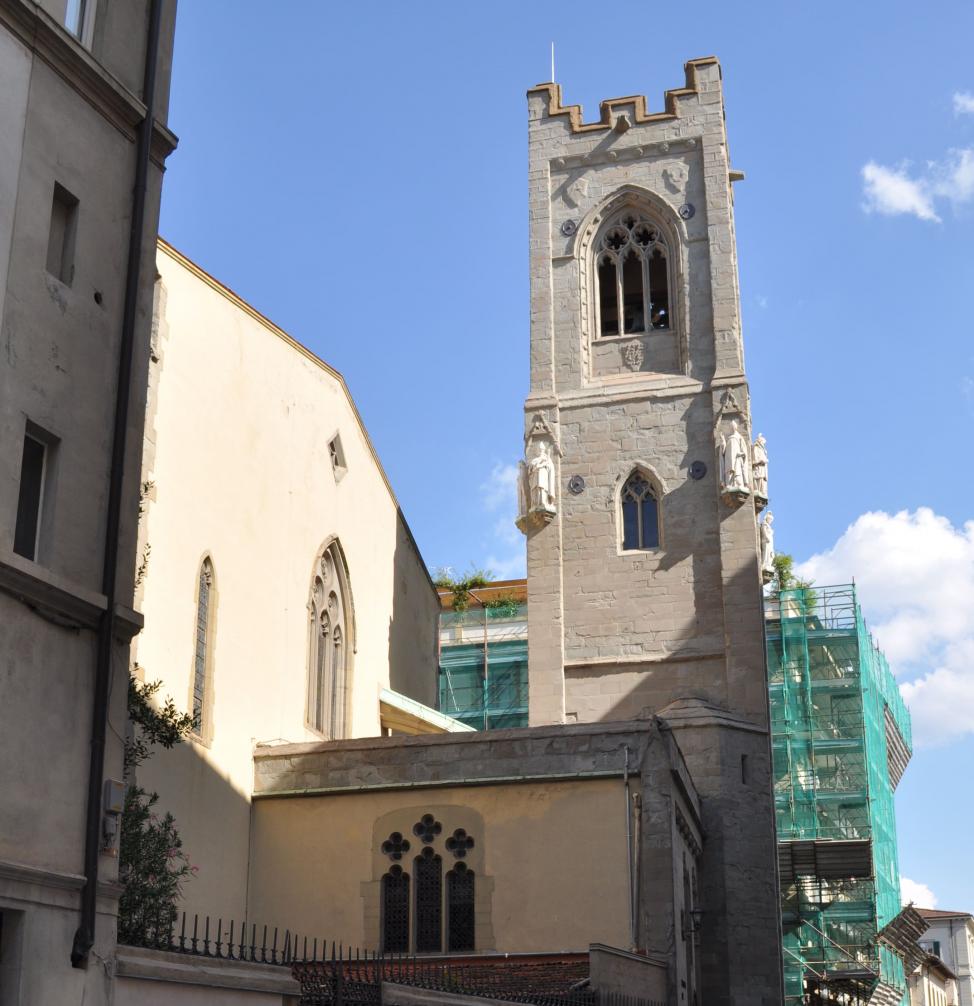RECORD
Waldensian Evangelical Church
The British Protestant community did not have a private chapel for a long time and shared the premises with the Swiss Reformed congregation. Between 1843 and 1846 a first Anglican Church (the Holy Trinity Church) was built on a plot of land close to Piazza San Marco (Saint Mark’s Square), designed by architect Domenico Giraldi. The building was positioned in another direction compared to the present one. In 1890, the Anglo- Florentine community decided to rebuild another church in the same location, assigning the task to Frederick Bodley, a Scottish architect.
The current church was built between 1892 and 1904, in a neo-Gothic style, the inside drawing from the “Perpendicular Style” – a late Gothic architecture in England characterised by a predominance of vertical lines in the decorations. The original single space was divided into a nave and two aisles by polystyle pillars with drums in green Prato. The keel shaped wooden ceilings were covered in plant decorations and monograms with the name of Christ. The windows along the aisles were mullioned, completed with stained glass panes on the basis of cartoons by the architect and by Natale Bruschi. The large organ was manufactured in Genoa in 1897. The Southern section looks onto what used to be called via Salvestrina (currently via Micheli) was turned into a closed portico, clad in pietra serena (grey sandstone), with two windows at the windows at the sides of the portal. The portico was covered with a cross vault with red, white and black groin ribs and the steeple was completed only in 1901, with Gothic-style niches containing marble statues.
The Waldensian Church acquired the property in 1967, and the church is used both as a place of worship and for activities of the congregation. The presence of Waldensians dates back to the Middle Ages in Italy but the Evangelization of the Peninsula was only conceived in the Nineteenth century. Several Pastors moved to Florence, including Bartolomeo Malan, Paolo Geymonat, and Giovanni Pietro Meille, first to learn Italian, then to contact local Evangelical communities and lastly to follow the budding congregation. Difficult beginnings were marred by post-1848 religious repression and there were several moves until they finally settled in Palazzo Salviati (in via de’ Serragli) that already housed the Claudiana Printing House and the Waldensian Theological Faculty. The Nineteenth century ended with a part of the congregation hiving off and opening a second Waldensian church in via Manzoni (1868).
After World War 2, the two congregations started working closer and united in 1957. Currently, it is also used by the South Korean Evangelical Methodist Church.
FURTHER INFORMATION
Included in: 14/03/2019Last edited in: 05/08/2019
PLACES OF INTEREST
Waldensian Evangelical Church
